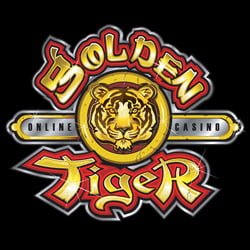
In the fast-paced world of online casinos, technology reigns supreme. And one question that continues to ignite heated discussions among industry experts is the battle between HTML5 and Flash. These two giants have emerged as the leading technologies for delivering rich gaming experiences. Today, we delve into this clash of titans and discuss the monumental shift it signifies in the digital era.
HTML5, touted as the future of the web, has quickly gained popularity thanks to its compatibility and versatility. Unlike its predecessor Flash, HTML5 doesn’t require any additional plugins or downloads, making it an accessible option for a wide range of devices. Its responsive design ensures seamless gameplay across various platforms, allowing players to indulge in their favorite casino games from their desktop, smartphone, or tablet.
On the other side of the ring, Flash, which enjoyed its dominance for years, is now grappling with numerous disadvantages. Players must first install a Flash plugin to enjoy Flash-based games, creating an extra step that could discourage some users. Additionally, Flash is notorious for its security vulnerabilities and its reputation for resource-heavy consumption. With the rise of mobile gaming, Flash’s lack of support for mobile platforms has become a significant drawback.
But what does this technological shift mean for players and online casinos alike? Let us delve deeper into the implications.
Benefits of HTML5:
1. Improved User Experience: HTML5 offers smoother animation, advanced graphics, and more interactive features, enhancing the overall gaming experience for players.
2. Cross-Device Compatibility: With HTML5, players can immerse themselves in their favorite casino games without worrying about compatibility issues, whether they’re using a PC, Mac, iOS, or Android device.
3. Faster Loading Times: HTML5 games load faster, allowing players to jump right into the action without any delays or interruptions.
4. Enhanced Accessibility: HTML5’s accessibility extends to players with disabilities, as developers can leverage its built-in features such as screen readers and keyboard navigation.
Drawbacks of Flash:
1. Security Risks: Flash is notorious for its susceptibility to security breaches, putting both players’ personal information and online casinos’ data at risk.
2. Limited Mobile Support: With the surging popularity of mobile gaming, Flash’s inability to run on mobile platforms leaves it at a significant disadvantage.
3. Plugin Requirements: To enjoy Flash-based games, players need to install additional plugins, creating an extra step that may deter some individuals.
4. Resource-Heavy Consumption: Flash tends to be resource-intensive, leading to slower performance and increased power consumption on devices.
It is evident that HTML5 has emerged as the victor in this battle of casino technology. Online casinos have swiftly adapted to this shift, transitioning their game libraries from Flash to HTML5 to provide players with an optimized and secure gaming experience across various devices.
However, it’s worth noting that Flash is not entirely obsolete. Legacy games and applications that still rely on Flash technology may continue to exist for some time. Nevertheless, the industry’s movement towards HTML5 highlights the digital era’s perpetual transformation and the importance of staying at the forefront of technological advancements.
As a player, it’s exciting to witness the continuous evolution of online casino technology. Whether you’re a seasoned gambler or a curious novice, the shift from Flash to HTML5 means more immersive gameplay, enhanced accessibility, and a safer online environment.
So, brace yourselves for the future of online casinos, where HTML5 reigns supreme, paving the way for innovative gaming experiences that transcend boundaries. Welcome to a new era of digital excitement and get ready to indulge in a world of thrilling possibilities!































